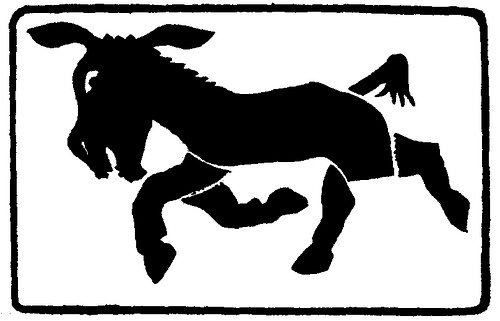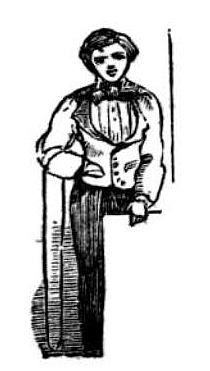A puzzle by Isaac Asimov:
“Name a common English word that contains somewhere in it, at the beginning, end, or middle, the three letters U-F-A in that order.”
I’ll withhold the answer. There’s no trick — it’s an ordinary English word.
A puzzle by Isaac Asimov:
“Name a common English word that contains somewhere in it, at the beginning, end, or middle, the three letters U-F-A in that order.”
I’ll withhold the answer. There’s no trick — it’s an ordinary English word.
Andy is a lazy census taker. He sits in the doorway of his house and counts each pedestrian who walks by.
“That’s no way to do it,” says Bill. He leaves the house and walks up and down the street, counting each person he passes.
After an hour he returns to the house and the two compare totals. Was Bill right? Assume all pedestrians walk at the same speed.
Why are 1980 pennies worth more than 1979 pennies?
For the same reason that 10 pennies are worth more than 9 pennies.
Finding himself hot and overweight at an Air Force base during World War II, Jerry Salny decided he could shed pounds by drinking scotch and soda. Here’s his reasoning:
“This has been tried,” Salny reported, “and although the experimenter hasn’t lost any weight in the process, he doesn’t worry about it much anymore.”
Why doesn’t it work?

Sam Loyd claimed to have sold “one thousand million” of these puzzles in the late 1800s, but the solution requires an insight that most solvers overlooked.
“Cut out the six pieces very carefully, then try to arrange them to make the best possible figure of a horse. That is all there is to it, but the entire world laughed for a year over the many grotesque representations of a horse that can be made with those six pieces.”

Now, sir, your coat is off!
And see–
Your right-hand pocketed!
So let it be:
While o’er your arm
An endless string–
Some three yards round–
Hangs like a sling.
Take the string off–
But, just for fun,
It must be done
Keeping your right-hand in its place,
And not a smile must stir your face.
Until you find this puzzle out,
No coat shall wrap your back about.
How is it to be done?
From Don Lemon, Everybody’s Illustrated Book of Puzzles, 1890:
Twice six are eight of us,
Six are but three of us,
Nine are but four of us,
What can we possibly be?Would you know more of us?
I’ll tell you more of us.
Twelve are but six of us,
Five are but four of us, now do you see?
A man eats breakfast at his camp, then travels due south. After going 10 miles in a straight line he stops for lunch. Then he sets out again due south. After going 10 miles in a straight line he finds himself back at camp. Where is he?
Let the rich, great, and noble banquet in the festal halls,
And pass the hours away, as the most thoughtless revel;
Then seek the poor man’s dreary home, whose very dingy walls
Proclaim full well to all how low his rank and level.
“Take away one letter from a word in the above stanza, and substitute another, leaving the word so metamorphosed still a word of the English language; and, by that change, totally alter the syntactical construction of the whole sentence, changing the moods and tenses of verbs, turning verbs into nouns, nouns into adjectives, and adjectives into adverbs, &c., and so make the entire stanza bear quite a different meaning from that which it has as it stands above.”